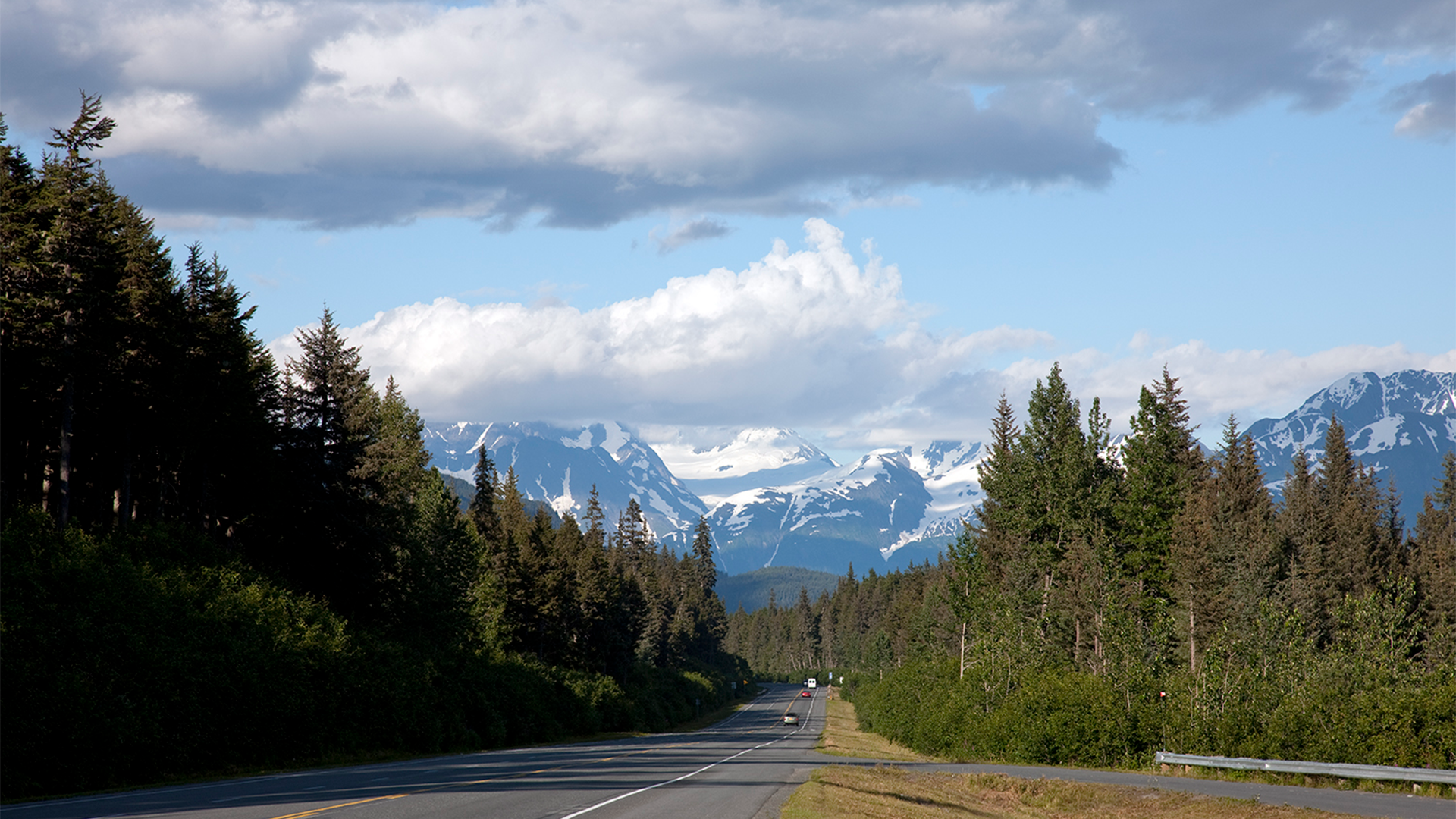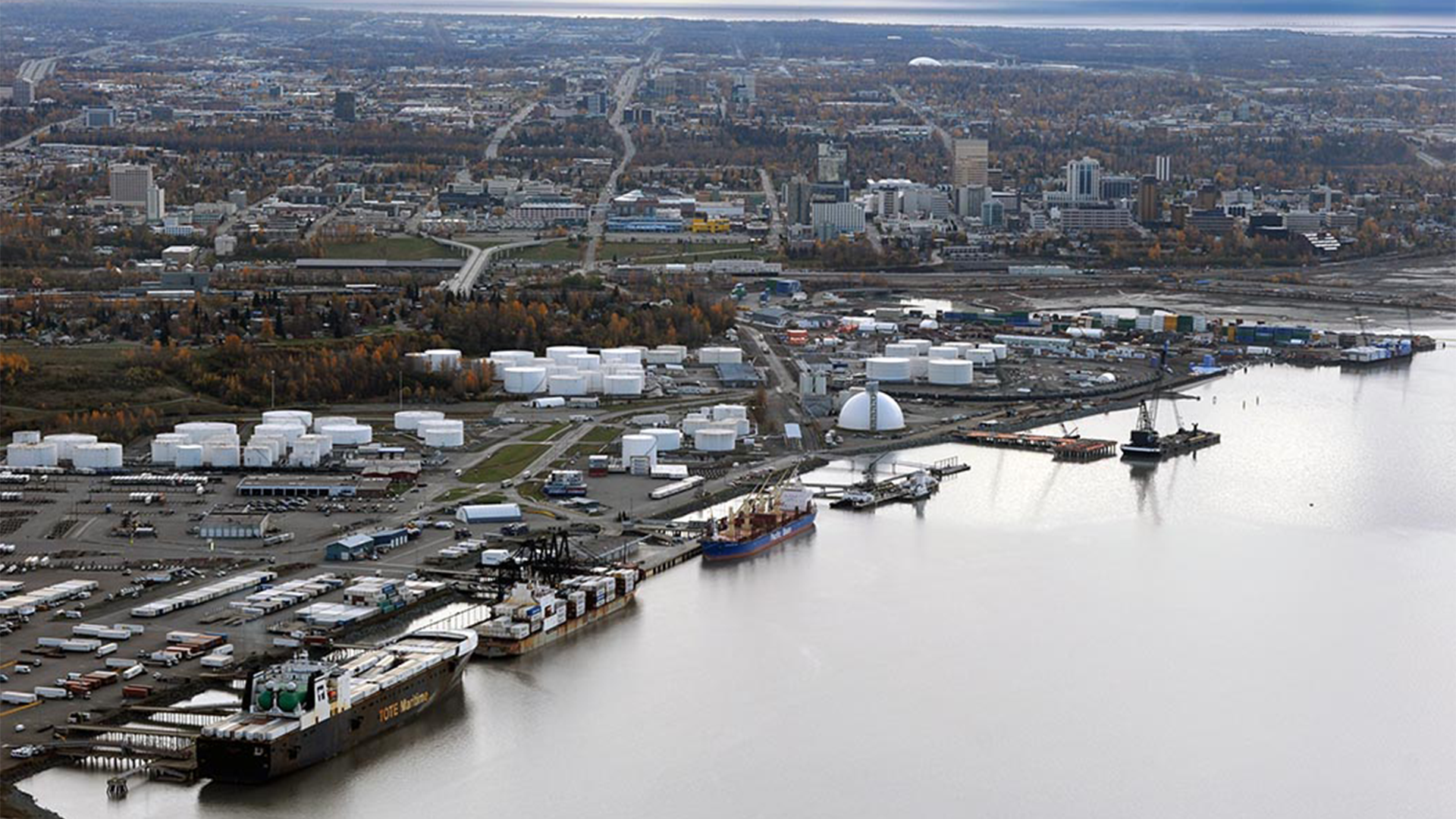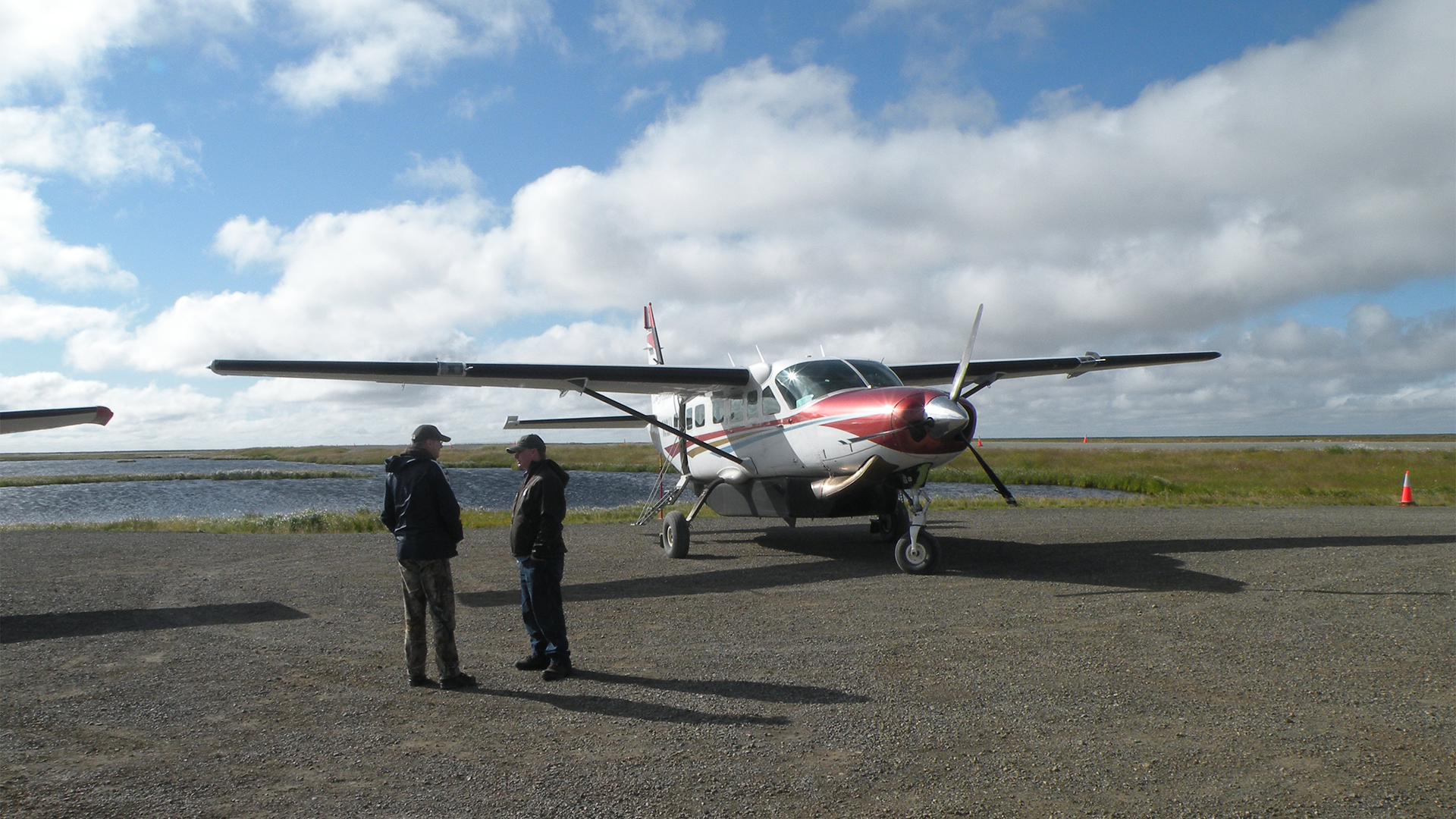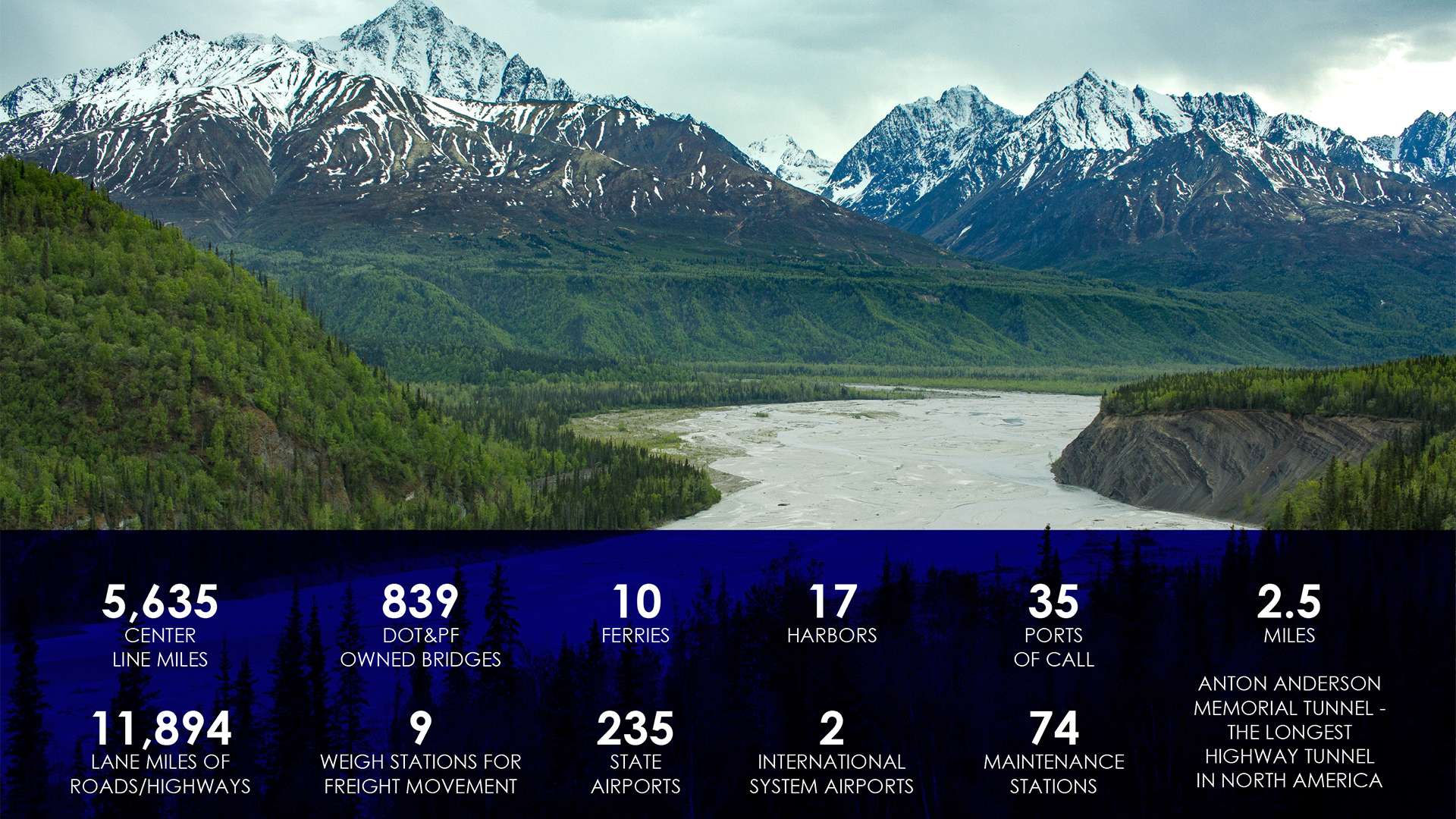October 18, 2022
Alaskans depend on many ways of getting around. The state spans vast distances, climates, geographies, and ways of life. It’s as big as California, Texas, and Montana combined, and its mountain ranges, glaciers, and wilderness create all kinds of natural barriers to transportation.
“We always like to say Alaska is different,” said Eric Taylor, the statewide Long-Range Transportation Plan (LRTP) and Freight Plan manager at the Alaska Department of Transportation and Public Facilities (DOT&PF). “There’s a huge part of the state that isn’t connected to the road system.”
When Eric says “huge,” he means huge. More than 80 percent of the state’s communities are inaccessible by road and depend on air or marine access to provide basic needs such as medical care and supplies, food, and nearly all mail delivery. Winter travel in town might mean a snowmachine or a dog sled.
On the other hand, Alaska has the fourth busiest airport in the world for cargo throughput. It’s a state of contrasts. Its National Highway System encompasses both six-lane urban freeways that see over 65,000 vehicles per day and a mostly-unpaved, 400-mile road that sees only a hundred.

Alaskans depend on many different ways of getting around. The state spans vast distances, climates, geographies, and ways of life.
Keeping Alaska Moving
The northern latitudes face major hurdles in coming years, as climate change undermines long-stable permafrost and increases the chances of severe storms, flooding, and sea level rise. Changing populations and workforce shortages, aging transportation infrastructure, scarce funding, and emerging technologies will require nimble planning to keep Alaska moving into the future.
DOT&PF leaders knew they faced a big challenge when it came time to update the state’s LRTP and freight plan. Kittelson project manager Wende Wilber and her team were ready to help them meet it.
The LRTP and FP guide decisions related to state-owned multimodal transportation assets over the next 25 years. They outline goals, policies, and measurable actions for an adaptable and resilient transportation system. The initiative’s name, Alaska Moves 2050, is a nod to the critical test the State’s transportation system faces. With resources stretched thin across such a broad territory and so many differing needs, it’s a system with many moving parts and little redundancy.
“We knew from day one resiliency was a priority,” said Wende, who called Alaska home for over 28 years. “Planning for the future here means thinking about strengthening connections between modes and keeping the infrastructure we have in good repair.”
“We’re a lot leaner than we used to be,” Eric said. “When you rely more on federal funding, you’re somewhat beholden to the rules that go with that funding-so we have to be more creative and use our brainpower to find innovative solutions to Alaska’s transportation challenges.”
“Like unmanned aerial systems for deliveries,” said Wende, “and winter ice roads between remote communities to reduce dependence on air travel.”

The Port of Alaska handles half of inbound freight movement, which is then consumed by nearly 90 percent of the population. Between 70 and 75 percent of this freight stays in the Anchorage/Mat-Su region. Once freight leaves the Port, it moves throughout the state by truck, plane, barge, or rail. Photo Credit: Erik Hill
Trains, Planes, Boats, and Trucks: Moving People and Freight in the Biggest State
Alaska’s population of 734,000 people is spread out and wide-ranging in its needs. Its freight system has many moving parts.
The Port of Alaska handles half of inbound freight movement, which is then consumed by nearly 90 percent of the population. Between 70 and 75 percent of this freight stays in the Anchorage/Mat-Su region. Once freight leaves the Port, it moves throughout the state by truck, plane, barge, or rail.
“You’ve got a very different freight problem in the interior parts of the state along the road network compared with what you have up in the far western part of the state,” Eric said. “The year-round connections to them are via air almost exclusively.”
Trucking plays a critical role in the distribution of goods to the airports and communities, yet for much of the system, there is only one roadway between important origins and destinations.
Add to that supply chains that extend not just throughout Alaska and the lower 48 but worldwide, and you have a complex, interconnected system that depends on multiple travel modes.

Alaska's population of 734,000 people is spread out and wide-ranging in its needs. Its freight system has many moving parts. Photo Credit: Alaska Department of Transportation & Public Facilities
A Data-Driven Plan
With Alaska Moves 2050, DOT&PF took a new approach.
“We put a strong emphasis on performance-based planning and programming,” Eric said. “We want to be able to make funding decisions as objectively and transparently as possible.”
Approaching long-range planning through a performance-based lens allows engineers and planners the flexibility to make decisions based on community needs, context, and safety.
“Data was huge,” Eric said. “As a DOT, we’re migrating to have more robust data management. In that process, we’re uncovering a whole lot of different data repositories that aren’t exactly compatible. It’s a real challenge figuring out what’s reliable, what we can let go of, and what things we’re not keeping track of now that we need to tap into.”

A key goal to launching Alaska Moves 2050 was to involve voices from each of the six cultural and geographic regions of Alaska.
Planning Amid a Pandemic
DOT&PF also found itself launching the Alaska Moves 2050 planning process in the middle of a worldwide pandemic, an unanticipated challenge.
“We had to do so much of it online,” Eric said. “Every previous plan we’ve done, we’ve gotten people together in the same room.”
While online coordination was a struggle for all of us in the depths of the pandemic, again, Alaska was unique. “You’re dealing with cultural differences as well,” Eric said. “So, we had to be willing to try some new and different things to reach out and get the word out.”
A key goal was to involve voices from each of the six cultural and geographic regions of Alaska. “We made phone calls to local community representatives, had flyers posted on community bulletin boards, used social media, and used our network of people to get the word out,” Wende said. “In the end we heard from over 2,500 Alaskans-the highest participation ever for the LRTP!”
Looking to the Future
With its new data-driven, performance-based plans in place, DOT&PF looks to a more streamlined, flexible future.
“What I’m hearing from leadership now is that we want to embrace a flatter organizational process with much more reliance on interdisciplinary teams, and that involves a change in the culture,” Eric said. “I think they’re good plans.”
Long-range transportation planning is a vital tool for communities of all sizes. Reach out to us if you have any questions. We’d love to help!
Find out more about Alaska Moves 2050 and view the draft plans online HERE.
